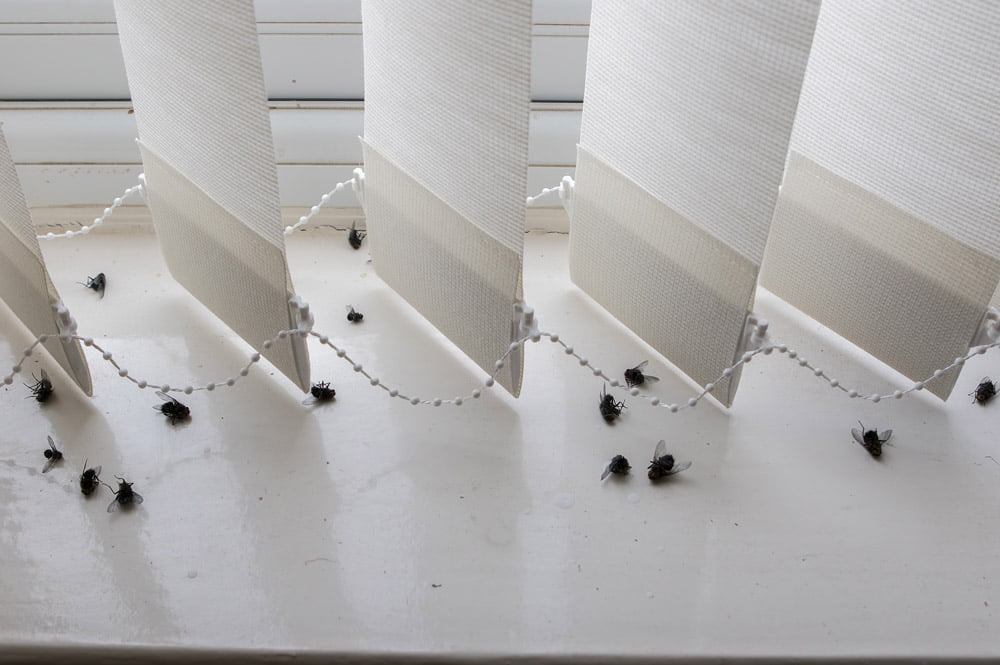What do flies look like
Cluster Flies are commonly found throughout the UK, including Cardiff and South Wales. The name refers to their habit of clustering together in large numbers and hibernating in buildings. There are several species found in the UK, but they are often found in mixed swarms. The sizes vary between 3 to 8 mm, but the commonest species are 3 to 4mm long.
Life cycle
Eggs are laid on damp soil or beneath dead and rotting leaves. The larvae of one species seek earthworms and bore through the body wall and are therefore more common. When the earthworm dies, the larvae bore out again and pupate in the soil. The adult flies feed on the nectar of the garden and wildflowers. There are, however, several species that can cause problems in urban areas. The habit of laying eggs in damp material can, on occasions, result in foods in domestic pantries becoming infested.
As a free-living insect, the length of the life cycle is weather dependent. In Britain, two generations are common, but in hot summers, up to four are possible. During the summer and early autumn, cluster flies are of no importance. As the season cools, they seek shelter in nooks and crannies in houses and other buildings. When the temperature drops further, they will seek greater protection and often form enormous clusters in lofts or roof spaces.
Often, nuisance is caused by the presence of these large clusters outside buildings while trying to find a way to hibernate. These masses may consist of several thousand flies clustered together, and the large clusters produce a sickly smell. If the flies are warmed up during their hibernation, they may emerge rather lazily and be a source of nuisance within the building. It has been observed that they will select a single building in a row of apparently identical buildings for clustering year after year. This is no indication of poor hygiene standards, and no explanation for the phenomenon has been found.
Fly Infestation Services in Cardiff
Control of these insects is, at best, difficult. Ideally, one would wish to prevent them from entering the building, but this is rarely possible and fly-proofing a building is not 100% effective. However, caulking around windows and sealing obvious entry points can help. When the insects are inside, control can be achieved by a combination of physical and chemical methods.
If your premises have been used for hibernation before, hanging insecticidal strips in the loft or attic may help reduce the numbers of flies. If the cluster is accessible, you can use a vacuum cleaner to collect them, and the vacuum bag can then be disposed of and sealed inside a plastic bag. Aerosol fly killers will deal effectively with small clusters, but larger ones may need to be treated by a pest control professional like Falconry Services.
Local Authority Service
Cardiff County Council Pest Control Department does Not offer treatment for cluster flies; therefore, if you’re struggling with a fly infestation in your Cardiff home, business or property, contact us today.

